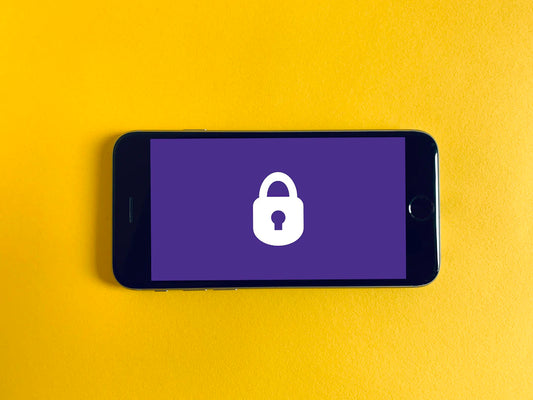Frequently Asked Questions
1. What is the main focus of the article?
2. Which age group is most concerned about online privacy according to the article?
3. What smartphone do many Gen Z users prefer for its privacy features?
4. What are some universal tips for enhancing mobile privacy mentioned in the article?
5. How can education play a role in improving privacy awareness across generations?
In today's digital landscape, privacy is of utmost importance. As mobile technology continually evolves, so do the attitudes and behaviors of different age groups when it comes to protecting their personal information. This article explores how privacy phone use varies across generations, highlighting key statistics, trends, and recommendations for maintaining privacy on devices like the Google Pixel 8 Pro and using platforms like GrapheneOS for enhanced security.
The Digital Trust Gap Across Age Groups
In a world increasingly dominated by technology, privacy concerns affect everyone, but not equally. Each age group exhibits unique behaviors regarding phone use and privacy settings. Let’s take a closer look at how attitudes toward digital privacy vary from Generation Z, Millennials, Generation X, to Baby Boomers.
Generation Z: Digital Natives with Caution
Generation Z, those born between 1997 and 2012, has grown up with smartphones and social media, making them inherently savvy about technology. Surprisingly, they exhibit a keen awareness of privacy issues. Studies show that:
- 75% of Gen Z feels concerned about their online privacy.
- 60% of them actively take steps to protect their personal information.
They often prefer using encrypted messaging apps and privacy-focused devices. Many Gen Z users are turning to smartphones like the Google Pixel 8 Pro, known for its robust privacy features. This generation values control over personal data and is often informed about systems like GrapheneOS that offer enhanced security.
Millennials: The Balancing Act
Millennials, born between 1981 and 1996, are known for their connection to technology but also display a level of skepticism regarding privacy. Here are some insights into their behaviors:
- 50% of Millennials believe that social media platforms misuse their data.
- 45% have taken steps such as adjusting privacy settings on their devices.
Millennials often juggle their need for connectivity with privacy concerns. They tend to rely on devices like the Google Pixel 8 Pro, which offers a balance of usability and privacy features. Apps that provide end-to-end encryption are also highly popular among this group.
Generation X: Cautious Adopters
Generation X, comprised of individuals born between 1965 and 1980, finds itself at the crossroads of traditional communication and modern technology. This age group shows a mix of skepticism and cautious acceptance regarding digital privacy. Key observations include:
- 40% of Gen X members often worry about identity theft.
- 30% use privacy settings regularly but are less proactive than younger generations.
They may not be as tech-savvy as Millennials or Gen Z, but they value their privacy nonetheless. Many opt for the Google Pixel 8 Pro for its user-friendly interface and reliable security options. Additionally, some proactive users from this age group start exploring systems like GrapheneOS for enhanced data protection.
Baby Boomers: Traditional Concerns
Baby Boomers (born between 1946 and 1964) represent a generation that is often less interconnected with the digital realm. However, they are increasingly adopting smartphones and are becoming aware of privacy issues. Here are some trends:
- 25% of Baby Boomers report feeling confused about privacy settings.
- 35% use social media but with a significant level of concern over data misuse.
This generation prioritizes safety and may prefer straightforward solutions when it comes to technology. They are more likely to utilize the privacy features on their existing devices rather than explore newer options like the GrapheneOS.
Understanding Privacy Concerns
As we examine the varying privacy concerns across different age groups, it's essential to recognize some of the common themes that emerge:
Data Sharing and Awareness
One of the major aspects influencing privacy concerns is the level of awareness about data sharing practices. A survey found that:
- 65% of participants across all age groups are unaware of how their information is collected and used.
- 50% of smartphone users believe they have lost control over their data.
This awareness gap highlights the need for education on data practices and how consumers can take back control, regardless of age.
Impact of Social Media
Social media platforms have been both a blessing and a curse when it comes to privacy. Different generations approach social media with varying levels of caution:
- Gen Z is more likely to use private profiles and tweak settings frequently.
- Millennials have embraced social media but also balance their online presence with privacy adjustments.
- Gen X primarily uses social media for connection but is cautious about friend requests from unknown users.
- Baby Boomers may struggle with the technology and often limit their usage due to privacy fears.
Understanding these approaches can help brands and businesses cater to the privacy needs of each demographic better.
Strategies for Enhanced Mobile Privacy
Regardless of age, everyone can benefit from implementing better privacy strategies on their smartphones. Here are some universal tips and tools:
Utilize Privacy-Focused Operating Systems
Exploring platforms like GrapheneOS offers users an increased level of privacy and security. This operating system enhances the security capabilities of devices, enabling users to control their data more efficiently. It is suitable for tech-savvy individuals who want to maximize their mobile privacy.
Regularly Update Device Settings
Keeping devices up to date is one of the simplest ways to improve mobile privacy. Ensure that:
- Operating systems are updated to the latest versions.
- Privacy settings are frequently reviewed and adjusted according to personal preferences.
For example, the Google Pixel 8 Pro comes with built-in security features that users can customize for maximum protection.
Emphasize Strong Passwords and Two-Factor Authentication
Having a strong password is the first line of defense against unauthorized access. Furthermore, enabling two-factor authentication (2FA) can significantly enhance security. Make it a habit to update passwords regularly and use unique passwords for different accounts.
Educate Yourself and Your Community
Education is a key element in bridging the privacy gap across age groups. Parents and older family members can benefit from guidance on how to navigate digital spaces without sacrificing their privacy.
Awareness and Expectations Moving Forward
As technology continues to develop, user expectations for privacy will evolve alongside them. Younger generations will demand more transparency while older generations will seek support in understanding their rights and technologies.
For businesses, recognizing these trends and adapting marketing strategies accordingly will be crucial. Offering transparent policies, effective communication, and user-friendly products will foster trust across different demographics.
Understanding the distinct privacy trends among various age groups is paramount. Bridging the gap between technology adoption and privacy is essential for everyone, from Generation Z to Baby Boomers. Whether it's leveraging smartphones like the Google Pixel 8 Pro, exploring GrapheneOS, or employing robust security practices, taking ownership of privacy will always be an invaluable lesson. Don’t leave your digital presence unprotected—start taking proactive steps toward your online anonymity today!







